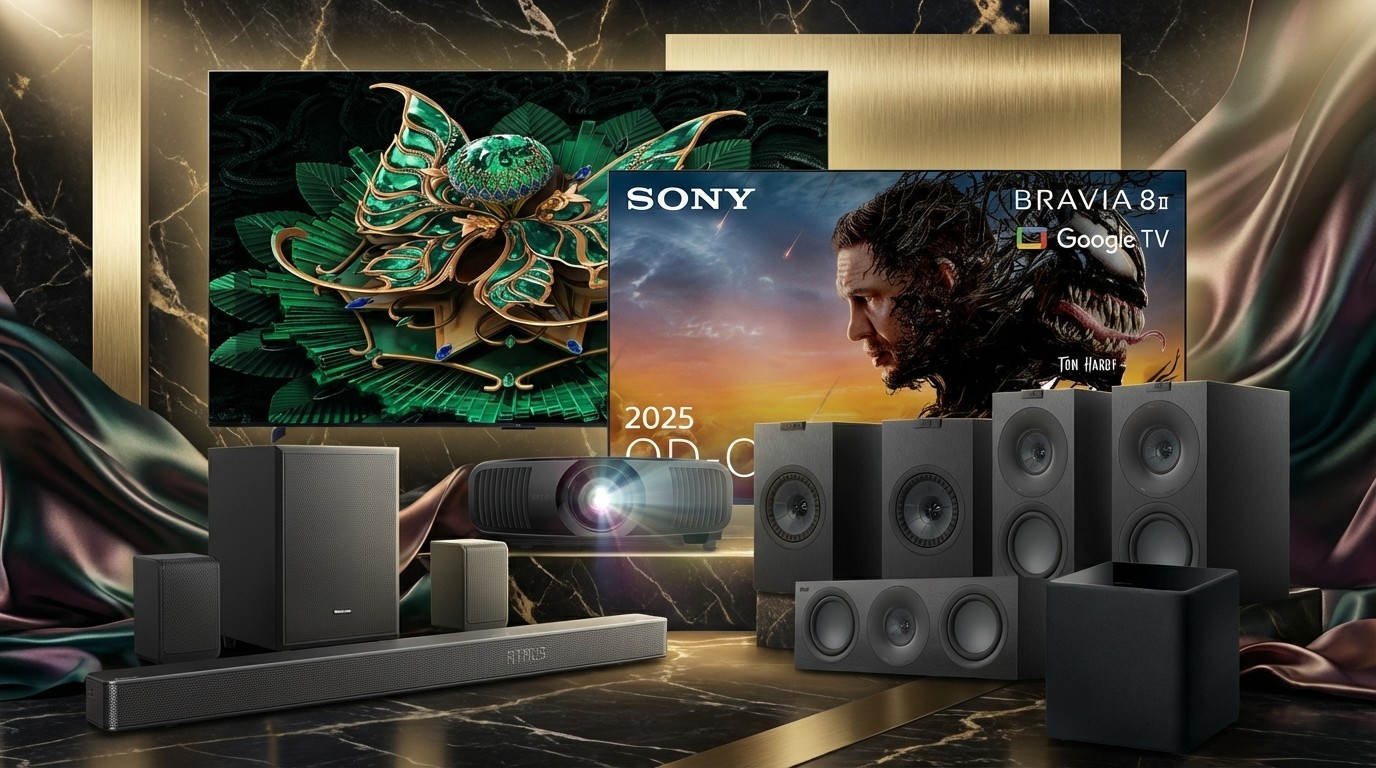What Hi-Fi? Verdict
The S95C is an astonishingly capable TV that’s held back from true greatness by a slight lack of picture subtlety
Pros
- +
Incredible contrast
- +
Bright, vibrant and super-sharp
- +
Excellent gaming specs
Cons
- -
A slight lack of picture subtlety
- -
No Dolby Vision
- -
Below-par sound for the price
Why you can trust What Hi-Fi?
We’ve been talking about QD-OLED for so long, it’s easy to forget that the very first QD-OLED TV arrived in stores only a year ago. Said TV, the Samsung S95B, certainly set the cat amongst the pigeons when it burst onto the scene, thanks to its combination of OLED’s pixel-level contrast control and QLED’s color vibrancy and (some of its) extra brightness.
It’s a great TV, too, receiving the full five stars in our review, but it is worth remembering that it’s a first-gen product – and something of a toe in the water for a company with a long-standing anti-OLED stance.
For 2023, Samsung is venturing a little further into the vibrant blue waters of QD-OLED with a two-model range, of which this S95C is the flagship model. Unlike the step-down S90C, which is in spec terms very much like last year’s S95B, the S95C boasts second-generation QD-OLED technology that promises vastly higher peak brightness and, we’re told, greater durability. It also has a One Connect box to keep cables away from the display and, to these eyes, one of the most stylish overall designs of any TV you can currently buy.
In theory, this is Samsung properly delivering on the promise of QD-OLED technology, and it’s fair to say that it’s one of the most technically capable TVs we have ever tested. It’s not, though, the best TV you can currently buy, particularly on a bang-for-buck basis.
Price
The model number may suggest that the S95C is the successor to the S95B, but it’s really more of a step up, and that is something that’s reflected in the price. The 65-inch model we have before us launched at $3300.
That means the Samsung S95C is identically priced to the excellent LG G3, which uses MLA technology to hit similarly high claimed brightness figures.
Both of these TVs are significantly more expensive than step-down OLED sets such as the LG C3 ($2500) and Sony A80L ($2600), as well as Samsung’s own S90C ($2600).
The latest hi-fi, home cinema and tech news, reviews, buying advice and deals, direct to your inbox.
It’s worth noting that last year’s S95B has been exceptionally aggressively discounted since launch, but there’s no guarantee that the S95C will get similar treatment. It’s possible that the S90C will be the model that gets the big price drops, though only time will tell.
Design
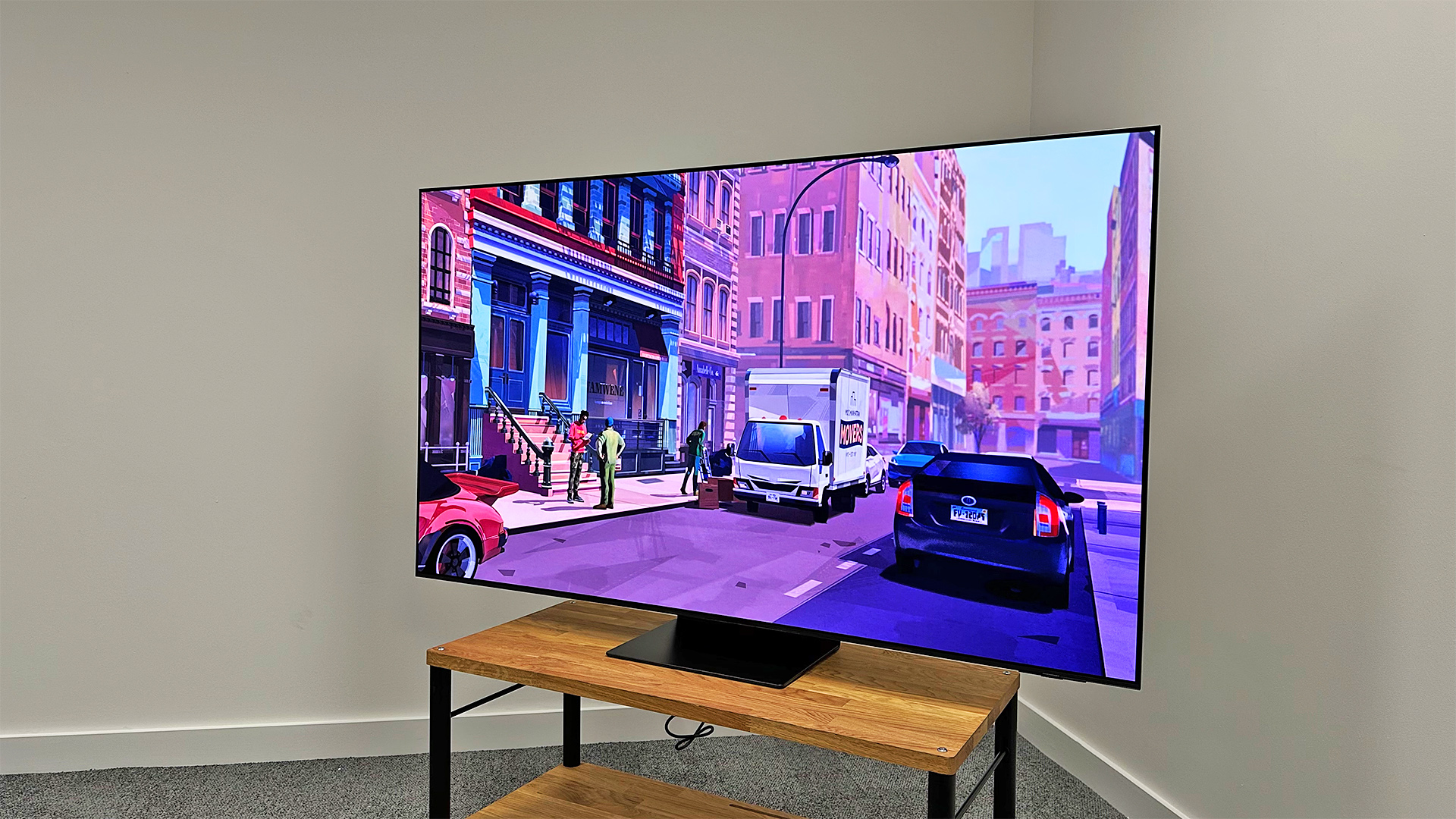
Last year’s S95B is one of the most strikingly thin TVs ever made, with the vast majority of its chassis being just a couple of millimetres thick. It has a chunkier section that houses the processing hardware, speakers and connections, but even this is more compact than the equivalent of most OLED TVs.
The S90C has a very similar design to last year's model, but this flagship S95C goes another route – one that’s reminiscent of LG’s G-series “Gallery” models. Here, the set is a uniform thickness of 0.4 inches. That allows it to be mounted more or less flush with a wall, makes it less worryingly flimsy, and also allows for better placement of the speakers.
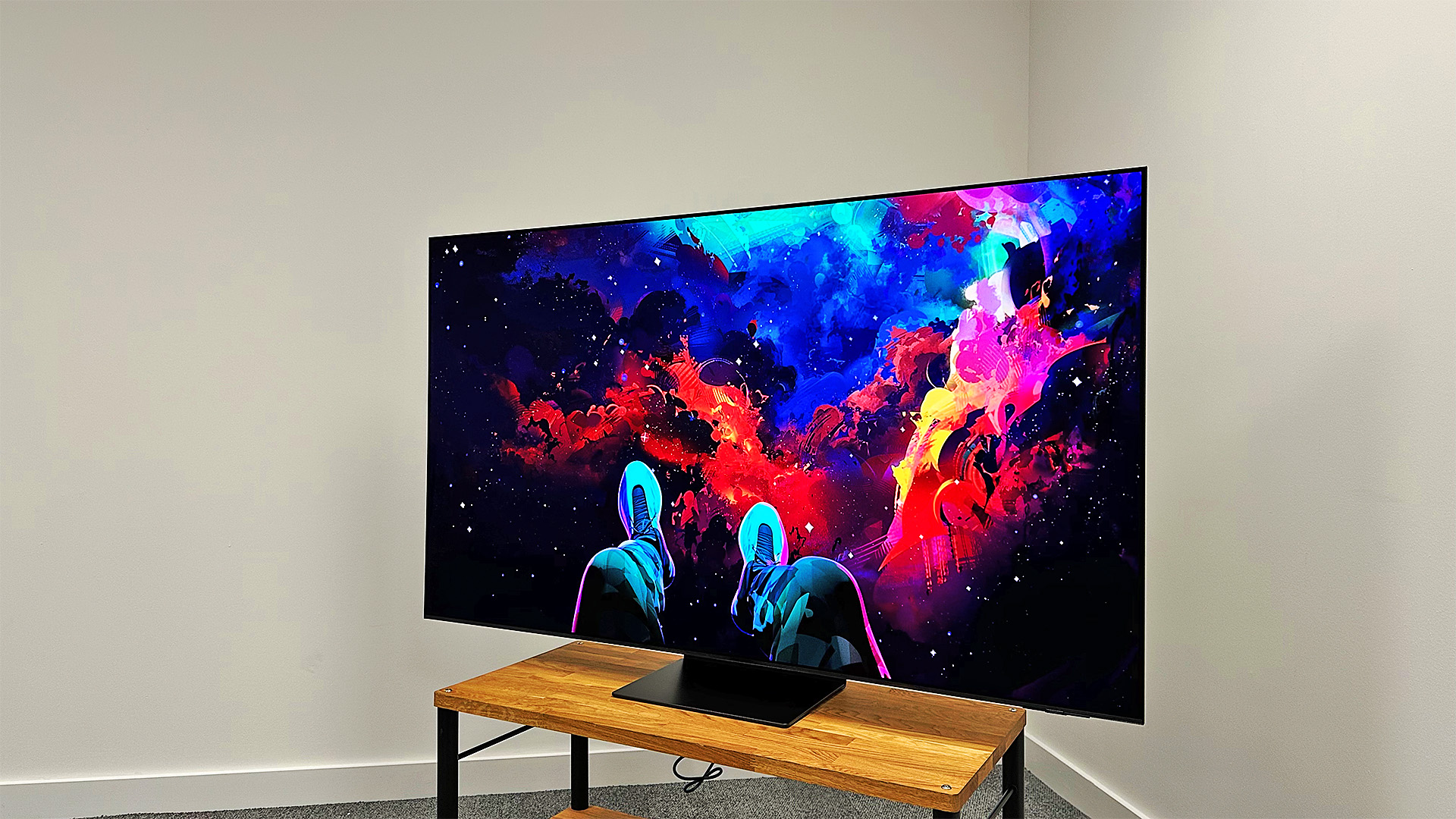
Screen size 65 inches (also available in 55in, 77in)
Type QD-OLED
Backlight N/A
Resolution 4K
HDR formats HLG, HDR10, HDR10+
Operating system Tizen
HDMI inputs x4 (4 x 48Gbps HDMI 2.1)
Gaming features 4K/120, VRR, ALLM, HGiG
ARC/eARC eARC
Optical output? Yes
Dimensions (hwd, without stand) 32.7" x 56.8" x 0.4"
This uniformly thin design has been achieved by moving all of the connections – including power – to an external 'One Connect' box. This year’s One Connect, which is exclusive to the S95C QD-OLED and the QN900C, QN800C and QN700C 8K QLEDs, is very similar to last year’s – i.e. much wider but slimmer than the brick design of old, and attachable to the rear of the stand for those who are happy with a more typical arrangement. Those who do position the One Connect box away from the set will then have just one, brilliantly slim cable running to their TV.
It’s also worth noting here that the S95C benefits from a new anti-reflective coating that’s exceptionally effective. The matte surface suppresses reflections very well indeed, even in a brightly lit room. LG’s G3 has something similar, but ‘standard’ OLEDs such as the C3 and Sony A80L do not.
All told, this is a gorgeous design. The gap between the worst-looking and best-looking OLED TVs isn’t a big one, but the S95C is decidedly one of the latter.
Features

The second-generation QD-OLED panel is undoubtedly the most notable feature of the S95C. Samsung says this allows the new set to go about 30 per cent brighter than last year’s S95B. That should make it capable of hitting a peak brightness figure of over 2000 nits when in its brightest, most processed picture modes, and around 1300 nits in its most cinematically accurate presets.
Ultimately, putting figures on this sort of thing is always tricky as peak brightness can be measured in a variety of ways and in a variety of different picture presets. The long and short of it is that the S95C should be roughly as bright as the MLA-boosted LG G3, and significantly brighter than any OLED TV launched pre-2023.
Brightness isn’t everything, of course, and Samsung would argue that the Quantum Dot element of its QD-OLED TV will give it an advantage over ‘WOLED’ TVs such as the G3 (which use a white sub-pixel) when it comes to color vibrancy, particularly in the brightest parts of the picture. It’s worth noting here, though, that the G3 doesn’t suffer from washed-out highlights in the way that some people predicted – it’s in fact lovely and rich, even in its brightest areas.
Naturally, you’ll want to send lots of HDR content to the S95C in order to see it at its best. As ever, the HLG, HDR10 and HDR10+ formats are supported, but Dolby Vision is not. Samsung still claims that it sees no benefit to Dolby Vision over the formats it already offers, but it's hard not to see the decision as needlessly stubborn when Dolby Vision content is so widespread.
A lack of Dolby Vision support means Dolby Vision gaming is obviously off the menu, but the S95C supports every other gaming feature of note, including 4K/120Hz (144Hz for PC), VRR and ALLM, across all four of its 48Gbps HDMI 2.1 inputs.
Dolby Atmos is on board, and the S95C has a 70W 4.2.2 sound system. This should be a big improvement on the pretty weak 60W 2.2.2 arrangement of the S95B, not simply because the numbers are higher, but because the new design allows for better placement of the speakers.
Samsung’s 2023 operating system is an improvement on last year’s, doing a better job of putting the content and features you actually want where you need them. It’s more responsive and fluid in use, too. There are still times when you can’t seem to find the source or setting that you’re looking for, though, and – as with LG’s current TVs – far too much of the home screen is dedicated to advertising.
Crucially, every app is present, and in 4K, HDR10 (HDR10+ in the case of Prime Video and Apple TV) and Dolby Atmos where the content allows. There are also apps for cloud gaming via the likes of GeForce Now and Xbox – the latter is exclusive to Samsung TVs.
Picture

Filmmaker Mode, when present, tends to be a TV’s most accurate picture preset with the most cinematic color balance and the least amount of active processing. It’s often the preset we prefer when testing a TV, but in the case of the S95C, it’s simply too dull. The 4K Blu-ray of Top Gun: Maverick looks subdued and overcast, even when watching in a pitch-black room, and shadow detail is lacking.
Even so, there are elements of the S95C’s picture performance that shine here, most notably its general (as in not dark) detail, which is superb, and its sharpness and solidity, which makes for a very three-dimensional image.
The dullness of the picture can, thankfully, be solved pretty easily, either by switching the HDR Tone Mapping from Static to Active, or switching to the Movie preset, which is broadly the same as Filmmaker Mode but has HDR Tone Mapping set to Active from the outset.
Suddenly, the S95C comes to life. There’s still a little bit of black crush, but less than previously, and the brightness and contrast of the delivery are downright glorious. Colors are rich and vibrant to a degree unmatched by rival OLEDs, particularly in the brightest parts of the picture, and the fact that those highlights are so bright but still married to inky-deep blacks makes for an image that’s extraordinarily impactful.
But the S95C isn’t terribly subtle. The overall color balance is good – a little richer than is truly authentic but not by much – but shading isn’t handled delicately enough. As John Hamm’s Admiral Simpson gives Maverick his first briefing/dressing-down, half of his face is in shadow while the other half is bathed in warm light from a window. The way the Samsung crushes some of the detail on the dark side and seems to exaggerate the light on the other makes this contrast unnaturally stark, and there’s a flatness on both sides.
It’s skin tones where we notice much of this lack of subtlety, but it’s also illustrated elsewhere. The red of the helicopter transporting Maverick pops from the screen in a way that’s startling in the wrong way, in that it draws your gaze away from where it should be.
We attempt to solve the black crush issue by experimenting with the Shadow Detail setting, but we find that this brightens more of the picture than it should while not significantly improving insight into the darker parts of the picture.
In the end, we decide that having HDR Tone Mapping set to Active is a bit too much and we return it to Static. To combat that original dullness, we instead switch the Contrast Enhancer from Off to Low and, for us, this is the S95C at its best. It’s still not the most subtle picture, but it’s better, and there’s still lots of punch and dynamism to the image.
The biggest problem for the Samsung, though, is that Sony’s A80L, which is a much more affordable TV, achieves a near-perfect balance of dynamism and subtlety almost right out of the box, whereas you always seem to be slightly trading one element for the other with the S95C.
Away from HDR, Filmmaker Mode seems right at home. A 1080p stream of Igby Goes Down is crisp, clean and vibrant, and while there is still some loss of dark detail and a slightly unsubtle approach to shading, it’s less obvious here than when watching HDR content.
Motion is handled well with all content, but only if you delve into the Picture Clarity settings. In the Movie preset, the preselected settings here result in overly aggressive processing that, while excellent most of the time, occasionally delivers noticeable over-smoothing of motion and flicker around fast-moving objects. Filmmaker Mode, meanwhile, has all motion processing turned off, and while this will be preferable to some purists, it results in a degree of judder that some will find off-putting. Manually adding a small amount of Judder and Blur Reduction results in a bit of smoothing that still looks natural, but Sony is still the king in this regard, as it has been for many years now.
Sound
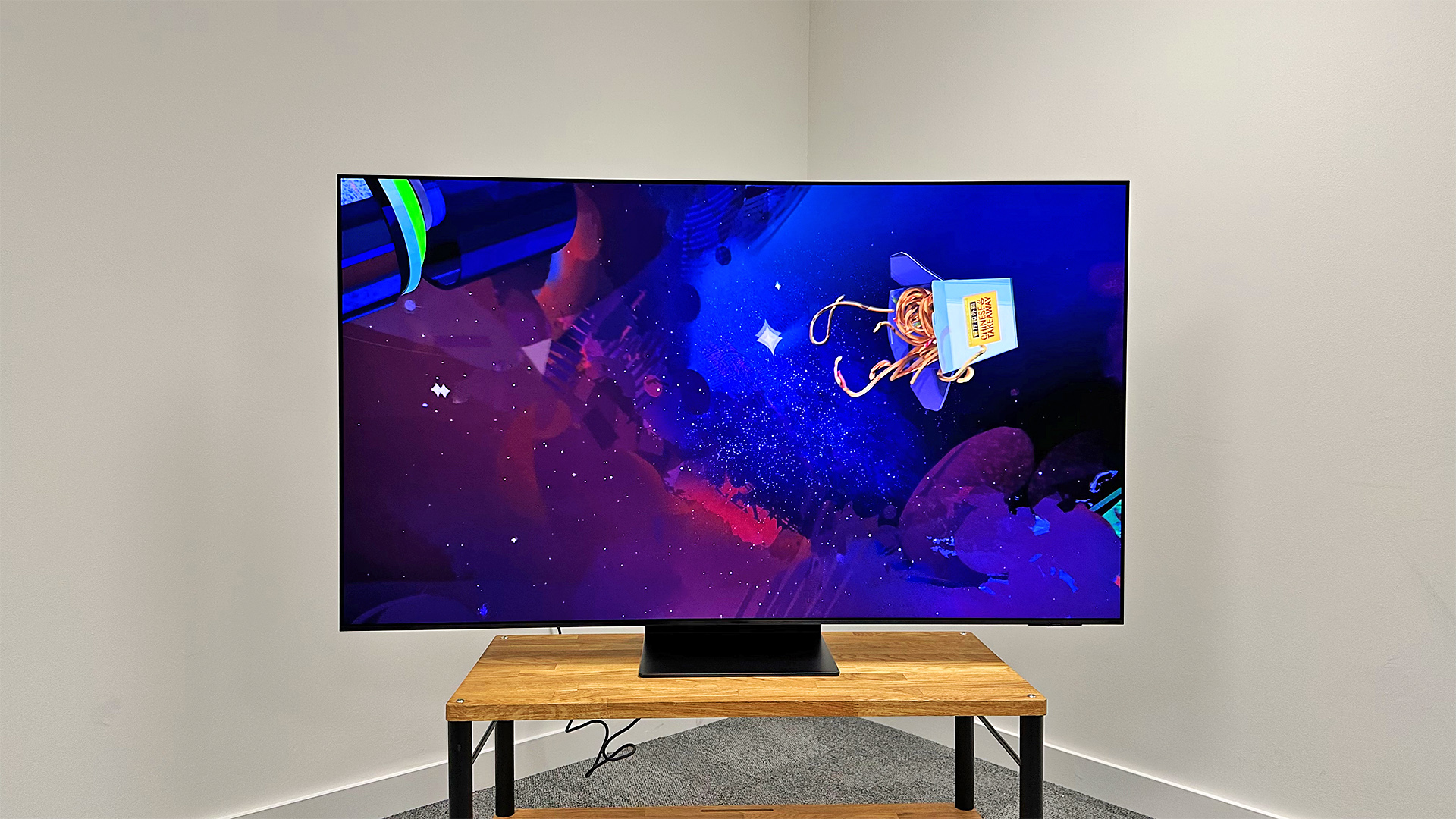
Our main criticism of the LG G3 relates to its sound, which is really dull. That’s thankfully not a criticism that can be levelled at the Samsung S95C, which is comparatively punchy and dynamic, and therefore a good deal more engaging. It’s relatively spacious, too, with the soundstage extending a fair way to either side of the set, and a small distance above it.
However, the S95C is also lacking bass weight and depth. In a way, that’s sensible, as it helps the set avoid the sort of low-end distortion that many TVs, most recently the LG G3 and C3, succumb to, but the Sony A80L strikes a better balance while also being both more spacious and more spatially precise. There’s also a little bit of harshness to the Samsung’s upper-midrange that makes certain effects more insistent than one would like.
Finally, while the S95C does a very good job of ensuring that dialogue is always clear, sound doesn’t project as far into the room as it should, and that can at times make everything feel a bit distant.
Verdict
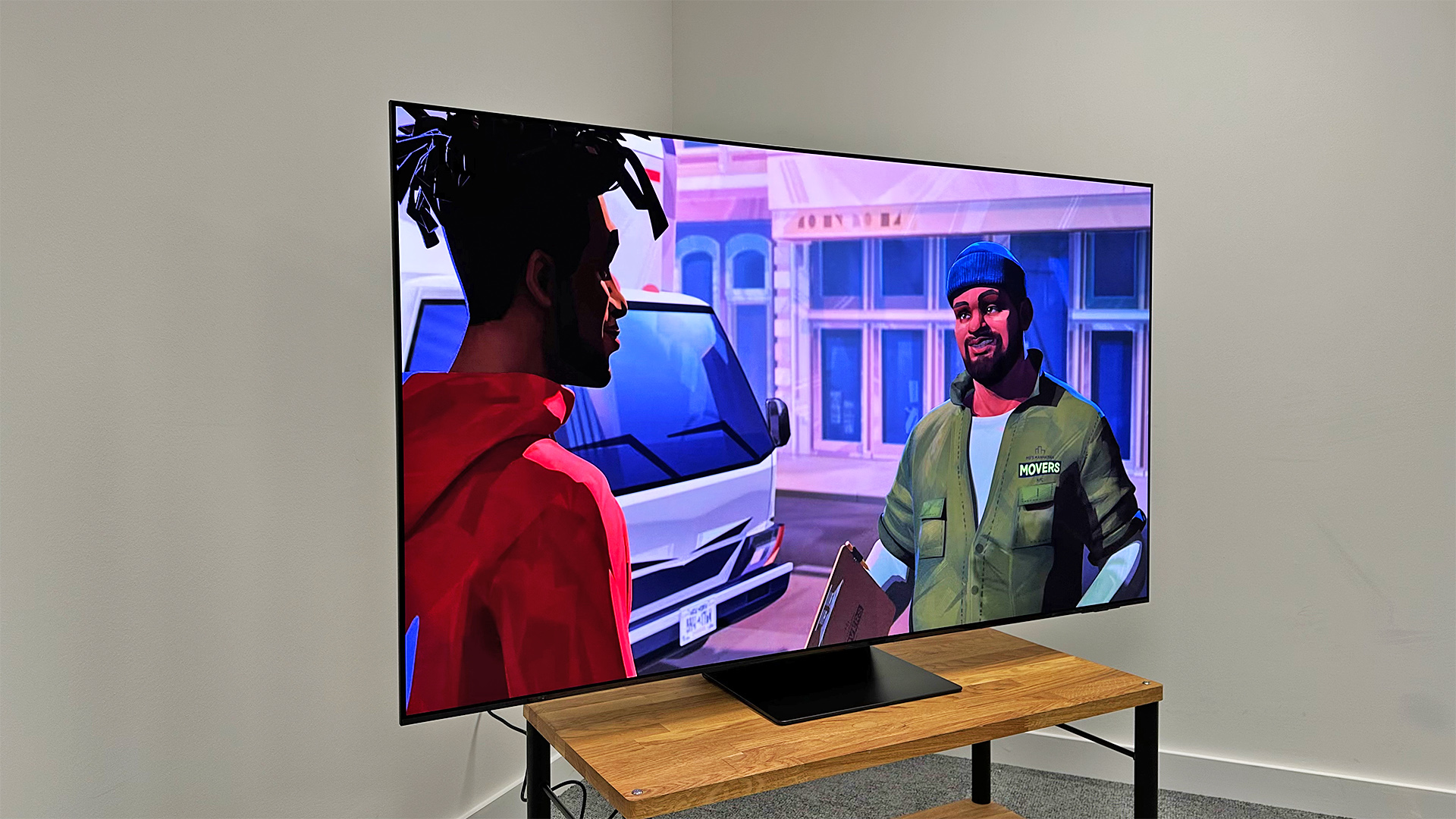
The Samsung S95C is a spectacular TV that can and will knock your socks off. There’s probably never been a consumer TV that’s more technically capable or more dynamic in actual use.
Unfortunately, that dynamism doesn’t go hand-in-hand with subtlety. To be clear, this is no blunt instrument of a TV, but its shading isn’t as nuanced and natural as it could be and, at this price, you are justified in expecting a best-of-both-worlds performance.
It feels as if Samsung is right on the cusp of true greatness here. With a slight rebalancing of its processing or even some greater granularity to some of its currently quite forthright picture settings, the S95C would be almost perfect.
SCORES
- Picture 4
- Sound 3
- Features 5
MORE:
Read our review of the LG G3
Also consider the LG C3
Read our Sony A80L review
Best 65-inch TVs: big screen sets for every budget tried and tested
Tom Parsons has been writing about TV, AV and hi-fi products (not to mention plenty of other 'gadgets' and even cars) for over 15 years. He began his career as What Hi-Fi?'s Staff Writer and is now the TV and AV Editor. In between, he worked as Reviews Editor and then Deputy Editor at Stuff, and over the years has had his work featured in publications such as T3, The Telegraph and Louder. He's also appeared on BBC News, BBC World Service, BBC Radio 4 and Sky Swipe. In his spare time Tom is a runner and gamer.
- Ketan BharadiaTechnical Editor


